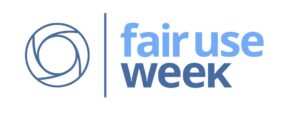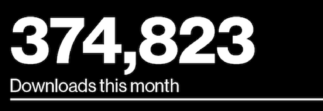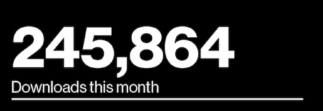 It’s Fair Use Week! For students, faculty, and researchers, this is reason to celebrate, because fair use provides an essential safety valve that allows for use of copyrighted works without obtaining permission.
It’s Fair Use Week! For students, faculty, and researchers, this is reason to celebrate, because fair use provides an essential safety valve that allows for use of copyrighted works without obtaining permission.
Fair Use is a remarkably short and comprehensible piece of copyright law which reflects the need for copyrighted works to be available for all to be used for “purposes such as criticism, comment, news reporting, teaching… scholarship, or research.”
The statute lays out a “four factor test” for determining whether a use is “fair,” and therefore not a copyright infringement. We are all empowered to use this test when deciding whether we can use someone else’s copyrighted work without seeking permission. The four factor test is flexible and avoids bright line rules. It includes: the purpose and character of proposed use; the nature of the copyrighted work; the amount and substantiality of the portion used; and the effect of the use on the potential market for or value of the work.
If you are looking for a way to remember those four factors, it may help to think of how fair use removes the “pane” (pain) of copyright law, based on analyzing the:
- Purpose (of your use)
- Amount (used)
- Nature (of the work)
- Effect (on the market)
To learn more about fair use and the four factor test, see the following MIT Libraries resources:
- Video of MIT-Harvard panel on fair use in scholarly journal and book publishing from February 23, 2016: The panel explores the barriers and issues that arise when scholarly publishers consider whether to allow fair use as a basis for including third-party material in scholarly articles and books, and considers the implications for authors and the scholarly publishing process.
- Fair use quiz: self-guided quiz explaining fair use and providing various scenarios to assess common fair use cases.
- Fair use, copyright, and images FAQ: Overview of how to determine the copyright and licensing status of an image, how to apply fair use, where to find “worry-free” images, and how to cite images.
- Using images: Copyright and fair use: Identifying images for reuse: A web guide on images and copyright, with links to more resources.
- Reuse of figures, images, and other content in theses: For students working on theses, information on MIT Libraries’ license agreements with publishers that make it possible to reuse figures in your thesis.
- Podcast on fair use: Radio Free Culture #38: a 2015 Fair Use Week podcast interview with Ellen Finnie, head of Scholarly Communications and Collections Strategy at the MIT Libraries. In this episode, RFC host Cheyenne Hohman speaks with Ellen about the four elements of fair use, how to determine if your use is fair, and other issues around the edges of copyright, music, technology.
- A window on fair use: Video on relying on fair use to legally reuse copyrighted content without permission from the copyright holder.
- Copyright information: Overview of copyright and fair use.


